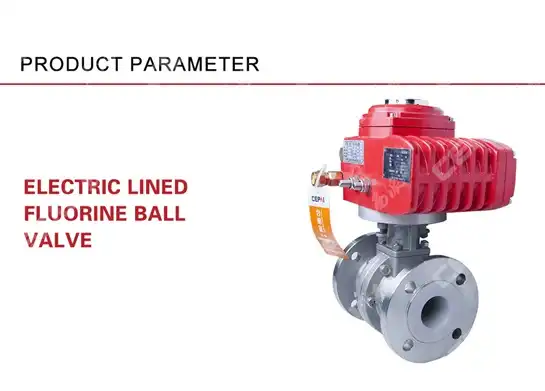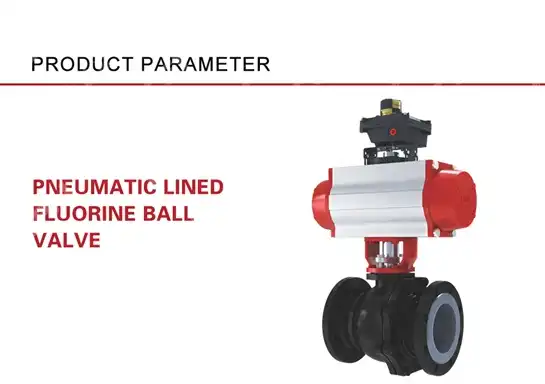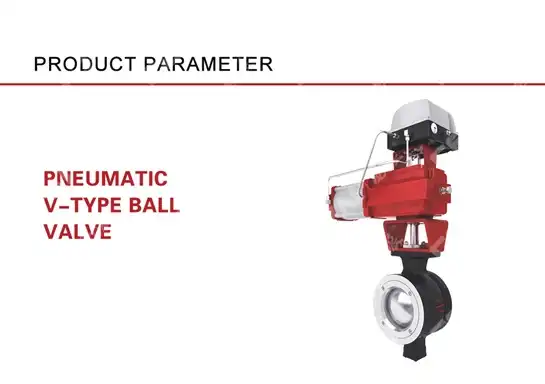High-Pressure Pneumatic O-Type Ball Valve Installation and Cost Factors
When critical industrial systems experience unexpected valve failures during high-pressure operations, the consequences extend far beyond simple equipment replacement. Unplanned downtime, safety risks, and mounting maintenance costs create urgent challenges that demand immediate attention. Understanding the installation requirements and cost variables for High-Pressure Pneumatic O-Type Ball Valve systems becomes essential for facility managers and engineers who must balance operational reliability with budget constraints while ensuring worker safety in demanding petrochemical, oil and gas, and power generation environments.
Understanding High-Pressure Pneumatic O-Type Ball Valve Technology
The evolution of fluid control technology has positioned High-Pressure Pneumatic O-Type Ball Valve systems at the forefront of industrial automation. These sophisticated control devices combine the reliability of traditional ball valve design with advanced pneumatic actuation, creating a solution that addresses the demanding requirements of modern high-pressure applications. Unlike conventional manual valves, pneumatic ball valves integrate automated control capabilities that enable rapid response to system conditions, remote operation, and seamless integration with distributed control systems.

-
Core Design Features and Operational Advantages
High-Pressure Pneumatic O-Type Ball Valve assemblies incorporate a full-bore ball design that provides unrestricted flow passage when fully opened, minimizing pressure drops and turbulence within the system. The O-type configuration refers to the ball's internal passage, which matches the pipeline diameter, ensuring maximum flow efficiency. This design consideration becomes particularly critical in high-pressure applications where energy conservation and system efficiency directly impact operational costs. The pneumatic actuation mechanism delivers consistent torque output across varying pressure conditions, enabling reliable operation even when handling viscous fluids or encountering system pressure fluctuations that would challenge manual operation. The integration of high-performance seal materials represents another crucial design element. Modern High-Pressure Pneumatic O-Type Ball Valve units employ advanced elastomeric and thermoplastic sealing technologies that maintain leak-tight integrity across extreme temperature ranges and corrosive chemical environments. These sealing systems typically incorporate spring-loaded designs that compensate for wear over extended service periods, significantly reducing maintenance intervals compared to conventional valve technologies. The seat design also accommodates bidirectional flow applications, providing operational flexibility for complex piping configurations.
-
Pressure Rating Classifications and Application Environments
High-pressure ball valve systems typically operate within pressure classifications ranging from 1,500 PSI to 10,000 PSI for industrial applications, with specialized designs capable of handling pressures exceeding 15,000 PSI in extreme service conditions. These pressure ratings directly correlate with body wall thickness, material selection, and connection end configurations. The High-Pressure Pneumatic O-Type Ball Valve designed for oil and gas wellhead applications, for example, must meet stringent API 6A specifications that mandate pressure containment capabilities suited for formation pressures encountered during drilling and production operations. Application environments significantly influence valve specification requirements. Petrochemical processing facilities require High-Pressure Pneumatic O-Type Ball Valve systems with materials resistant to corrosive process fluids, while power generation applications prioritize high-temperature capability for steam service. Offshore platforms demand valve designs that withstand saltwater exposure and meet stringent fire safety certifications. Understanding these application-specific requirements ensures proper valve selection that balances performance capabilities with long-term reliability and safety compliance.
Installation Requirements for High-Pressure Pneumatic Ball Valves
Proper installation methodology directly determines the operational reliability and service life of High-Pressure Pneumatic O-Type Ball Valve systems. Unlike lower-pressure applications where installation errors might result in minor leakage, mistakes during high-pressure valve installation can lead to catastrophic failures, endangering personnel and causing extensive equipment damage. Professional installation teams must possess specialized knowledge of high-pressure piping systems, pneumatic control integration, and safety protocols specific to hazardous environments.
-
Pre-Installation Planning and System Assessment
Successful High-Pressure Pneumatic O-Type Ball Valve installation begins with comprehensive system assessment and planning. Engineers must verify that pipeline specifications, including pressure ratings, material compatibility, and dimensional standards, align with valve requirements. This assessment includes examining existing piping support structures to ensure they can accommodate the additional weight and thrust loads generated by pneumatic actuators. Inadequate support can result in misalignment stress on valve connections, leading to premature seal failure and connection joint leaks. The pneumatic supply system requires careful evaluation before valve installation commences. Actuators demand clean, dry instrument air at specified pressure levels to function reliably. Moisture contamination in pneumatic supply lines accelerates internal corrosion and damages sealing components within actuator assemblies. Installation specifications typically mandate inline air preparation equipment, including filters, regulators, and lubricators positioned near actuator locations. These components ensure consistent air quality and pressure delivery, which directly affects actuator response time and positioning accuracy.
-
Installation Procedures and Technical Requirements
The physical installation of High-Pressure Pneumatic O-Type Ball Valve assemblies follows rigorous procedures designed to prevent damage and ensure proper alignment. Flange connection installations require precise bolt tightening sequences using calibrated torque wrenches to achieve uniform gasket compression. Uneven tightening creates gasket distortion that compromises seal integrity under pressure cycling. Threaded connections demand thread sealant selection compatible with process fluids and operating temperatures, with specific application techniques that prevent contamination ingress into the valve body. Actuator mounting and air supply connection constitute critical installation phases. Mounting brackets must secure actuators without inducing stress on valve stems, which could affect internal component alignment. Air supply tubing requires proper support and protection from mechanical damage, with connections made using appropriate fittings rated for maximum supply pressures. Control signal wiring, whether pneumatic pilot lines or electrical solenoid connections, must follow routing practices that prevent electromagnetic interference and physical damage during normal facility operations.
-
Commissioning and Performance Verification
Following physical installation, systematic commissioning procedures verify proper High-Pressure Pneumatic O-Type Ball Valve performance before placing systems into service. Initial function testing confirms actuator stroke adjustment, ensuring the valve achieves full open and closed positions within specified cycle times. Leak testing using appropriate methods for pressure classification and service conditions validates seal integrity at both body-to-bonnet joints and stem packing interfaces. Many applications require documented pressure testing using inert gases or liquids, with test pressures exceeding normal operating conditions by specified safety margins. Control system integration testing verifies proper signal communication between distributed control systems and valve actuators. This testing confirms correct fail-safe positioning, which determines whether valves close or open upon loss of actuator supply pressure. Emergency shutdown system testing validates that High-Pressure Pneumatic O-Type Ball Valve assemblies respond appropriately to safety interlocks, ensuring facility protection during abnormal operating conditions. Complete documentation of commissioning results provides baseline performance records essential for future maintenance planning and troubleshooting activities.

Cost Factors Affecting High-Pressure Pneumatic Ball Valve Projects
Economic considerations significantly influence High-Pressure Pneumatic O-Type Ball Valve procurement and installation decisions. Total project costs encompass multiple elements beyond simple equipment purchase prices, including engineering design services, specialized installation labor, auxiliary equipment requirements, and long-term maintenance planning. Understanding these cost drivers enables informed decision-making that balances initial capital investment against lifecycle operating expenses and reliability expectations.
-
Equipment Procurement and Material Selection Costs
The base cost of High-Pressure Pneumatic O-Type Ball Valve assemblies varies substantially based on size, pressure rating, material construction, and actuator specifications. Valve body materials significantly impact pricing, with carbon steel options representing the most economical choice for non-corrosive applications, while stainless steel and exotic alloy constructions command premium pricing necessary for corrosive service environments. A two-inch carbon steel valve rated for 1,500 PSI might cost between 800 to 1,500 dollars, whereas a comparable six-inch stainless steel valve rated for 5,000 PSI service could exceed 15,000 dollars for the valve body alone. Actuator selection adds substantial cost variations to total system pricing. Standard pneumatic rack-and-pinion actuators suitable for quarter-turn applications provide cost-effective automation solutions, while high-torque scotch-yoke actuators necessary for large valves or high differential pressure service increase equipment costs by fifty to one hundred percent. Actuator accessories including solenoid valves, position transmitters, and local position indicators further escalate procurement expenses. The integration of smart positioner technology with diagnostic capabilities represents an additional investment that provides enhanced operational intelligence justifying higher initial costs through improved maintenance efficiency.
-
Installation Labor and Professional Service Expenses
Professional installation labor constitutes a significant portion of total High-Pressure Pneumatic O-Type Ball Valve project costs. Specialized technicians with high-pressure piping certification and pneumatic system expertise command premium hourly rates reflecting their training and experience. Installation complexity varies with system pressure requirements, with higher-pressure applications demanding more rigorous quality control measures, including radiographic weld inspections and documented torque procedures that extend installation duration and increase labor costs proportionally. Facility location and accessibility considerations affect installation expenses substantially. Valves installed in easily accessible ground-level locations require minimal support equipment, whereas installations in elevated pipe racks or confined spaces necessitate scaffolding, lifting equipment, and additional safety measures that multiply labor requirements. Offshore installations or remote facility locations add mobilization costs, accommodation expenses, and weather-related delays that can dramatically exceed initial budget estimates. Projects requiring installation during scheduled maintenance shutdowns often incur premium rates due to compressed timelines and round-the-clock work schedules necessary to minimize downtime.
-
Long-Term Operating and Maintenance Cost Considerations
While initial procurement and installation expenses receive primary focus during budget development, lifecycle operating costs often exceed capital investment over equipment service life. High-quality High-Pressure Pneumatic O-Type Ball Valve systems from established manufacturers typically incorporate design features that reduce maintenance requirements and extend service intervals, providing lower total ownership costs despite higher initial purchase prices. Premium valve designs with replaceable seats and seals enable in-line maintenance without complete valve removal, substantially reducing maintenance labor and system downtime costs. Energy consumption for pneumatic actuation represents an ongoing operational expense frequently overlooked during valve selection. Air compressor operating costs accumulate continuously throughout equipment service life, with inefficient actuator designs or pneumatic leakage increasing energy waste significantly. Modern actuator technologies incorporating low-friction seals and optimized air circuit designs minimize air consumption, reducing compressor capacity requirements and associated energy costs. Investment in high-efficiency pneumatic components delivers measurable return through reduced utility expenses over equipment lifespans typically exceeding twenty years in well-maintained installations.
Selecting the Right Manufacturer and Quality Standards
Manufacturer selection critically influences High-Pressure Pneumatic O-Type Ball Valve system performance, reliability, and total lifecycle costs. Reputable manufacturers invest substantially in engineering development, quality control systems, and after-sales support infrastructure that directly benefits end users through superior product performance and reduced operational risks. Industry certifications and third-party quality endorsements provide objective validation of manufacturing capabilities and product quality levels.
-
Industry Certifications and Compliance Requirements
High-pressure valve applications demand strict adherence to international quality and safety standards. Manufacturers holding API Q1 certification demonstrate systematic quality management specifically tailored to oil and gas industry requirements, while ISO 9001 certification validates fundamental quality system implementation. Product-specific certifications including API 6A for wellhead equipment, API 6D for pipeline valves, and CE marking for European market compliance indicate that High-Pressure Pneumatic O-Type Ball Valve designs meet stringent performance and safety requirements established by recognized industry authorities. Safety Integrity Level certifications for automated valve assemblies verify that control systems achieve specified reliability levels essential for safety-critical applications. SIL-rated valve packages undergo rigorous failure mode analysis and validation testing that quantifies system reliability and establishes maintenance intervals necessary to maintain certified safety performance. These certifications provide engineering teams with documented evidence supporting safety system designs, ensuring regulatory compliance and minimizing liability exposure during facility operation.
-
Manufacturing Capabilities and Quality Assurance
Advanced manufacturing capabilities distinguish leading High-Pressure Pneumatic O-Type Ball Valve producers from commodity suppliers. Investment in precision machining equipment, automated welding systems, and comprehensive testing facilities enables consistent production of high-tolerance components essential for reliable high-pressure service. Manufacturers operating CNAS-accredited laboratories perform material verification, dimensional inspection, and performance testing that validate product conformance to design specifications and customer requirements before shipment. Traceability systems implemented throughout the manufacturing process provide documentation linking finished products to raw material certifications, production records, and quality inspection results. This traceability becomes particularly important for critical service applications where component failure analysis might be necessary following service incidents. Leading manufacturers also maintain extensive research and development programs that continuously improve product designs, incorporating field performance feedback and emerging technology developments that enhance reliability and extend service life.
Conclusion
High-Pressure Pneumatic O-Type Ball Valve installation and cost considerations encompass multiple interconnected factors that determine project success and long-term system reliability. Proper valve selection, professional installation execution, and manufacturer quality credentials collectively influence both immediate project expenses and lifecycle operating costs. Organizations investing in comprehensive planning, quality equipment, and experienced installation teams position themselves for optimal operational performance while minimizing downtime risks and maintenance burdens that compromise productivity and profitability in competitive industrial environments.
Cooperate with CEPAI Group Co., LTD.
When your facility demands uncompromising reliability for high-pressure fluid control applications, partnering with an established China High-Pressure Pneumatic O-Type Ball Valve manufacturer delivers the quality assurance and technical support your operations require. CEPAI Group Co., LTD., operating from our 56,000 square meter intelligent manufacturing facility in Jiangsu Province, combines advanced production capabilities with comprehensive quality certifications including API 6A, ISO 9001, and SIL ratings for critical safety applications. Our position as a recognized China High-Pressure Pneumatic O-Type Ball Valve supplier stems from continuous innovation backed by provincial-level research centers and postdoctoral innovation programs that drive product development aligned with evolving industry requirements.
As a trusted China High-Pressure Pneumatic O-Type Ball Valve factory, we serve major energy companies including PetroChina, Sinopec, and CNOOC, alongside international engineering firms requiring high-performance valve solutions for demanding applications. Our extensive product range encompasses wellhead devices, pipeline valves, and specialized control equipment manufactured using the longest high-precision intelligent production line in the Asia Pacific region. Whether you require standard High-Pressure Pneumatic O-Type Ball Valve configurations or custom solutions for unique operating conditions, our engineering team provides comprehensive technical consultation supporting optimal valve selection and application design.
We invite you to experience the advantages of partnering with a China High-Pressure Pneumatic O-Type Ball Valve wholesale supplier committed to delivering High Quality High-Pressure Pneumatic O-Type Ball Valve products at competitive High-Pressure Pneumatic O-Type Ball Valve price points. Our High-Pressure Pneumatic O-Type Ball Valve for sale inventory includes multiple configurations readily available for immediate shipment, while our manufacturing flexibility accommodates custom specifications for specialized applications. Contact our technical sales team at cepai@cepai.com to discuss your specific requirements and receive detailed product information, technical documentation, and competitive quotations. Save this resource for future reference when valve replacement or system expansion projects require reliable, cost-effective solutions from a manufacturer you can trust.
References
1. "API Standard 6A: Wellhead and Tree Equipment" - American Petroleum Institute Technical Standards Committee
2. "Pneumatic Actuators: Design and Performance Characteristics" - Smith, Robert J., Industrial Valve Engineering Journal
3. "High-Pressure Valve Selection and Lifecycle Cost Analysis" - Chen, Wei and Anderson, Mark, Process Engineering International
4. "Safety Integrity Level Requirements for Automated Valve Systems" - International Electrotechnical Commission Working Group
_1746598557316.webp)
Get professional pre-sales technical consultation and valve selection services, customized solution services.

About CEPAI


